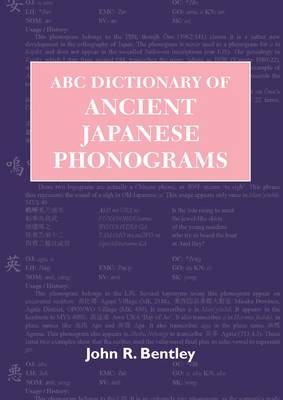
- Afhalen na 1 uur in een winkel met voorraad
- Gratis thuislevering in België vanaf € 30
- Ruim aanbod met 7 miljoen producten
- Afhalen na 1 uur in een winkel met voorraad
- Gratis thuislevering in België vanaf € 30
- Ruim aanbod met 7 miljoen producten
Zoeken
Omschrijving
Making one's way through the dense jungle of Old Japanese poetry and prose can be a daunting and discouraging task because of the complex writing systems used during the Asuka (550-710 CE) and Nara (710-789 CE) eras. The intricate script is a bewildering mix of Chinese characters employed for their semantic or phonetic value or as hints to other words--or even for word games.
For the first time in English, this dictionary lists all 1,215 Chinese characters used as phonograms (ongana) or vernacular characters (kungana) in Old Japanese texts. It brings together a vast amount of data in relation to Chinese phonology: Old Chinese, Later Han Chinese, Middle Chinese, Sino-Japanese (both Go-on and Kan-on), Sino-Korean, Sino-Vietnamese, and Chu Nom. The entries contain examples from more than twenty Old Japanese texts showing how each character was used and in what context. Data from excavated wooden tablets, or slips (mokkan), is included as well as a chart of all the graphs and where they appear in the cited material. Students and scholars of Old Japanese writing and language and those more widely interested in the culture and history of pre-Heian Japan now have important linguistic and textual data at their fingertips arranged by character to help them decipher material from the ancient past.Specificaties
Betrokkenen
- Auteur(s):
- Uitgeverij:
Inhoud
- Aantal bladzijden:
- 616
- Taal:
- Engels
- Reeks:
- Reeksnummer:
- nr. 19
Eigenschappen
- Productcode (EAN):
- 9780824856106
- Verschijningsdatum:
- 31/12/2015
- Uitvoering:
- Hardcover
- Formaat:
- Genaaid
- Afmetingen:
- 188 mm x 257 mm
- Gewicht:
- 1292 g

Alleen bij Standaard Boekhandel
+ 213 punten op je klantenkaart van Standaard Boekhandel
Beoordelingen
We publiceren alleen reviews die voldoen aan de voorwaarden voor reviews. Bekijk onze voorwaarden voor reviews.











